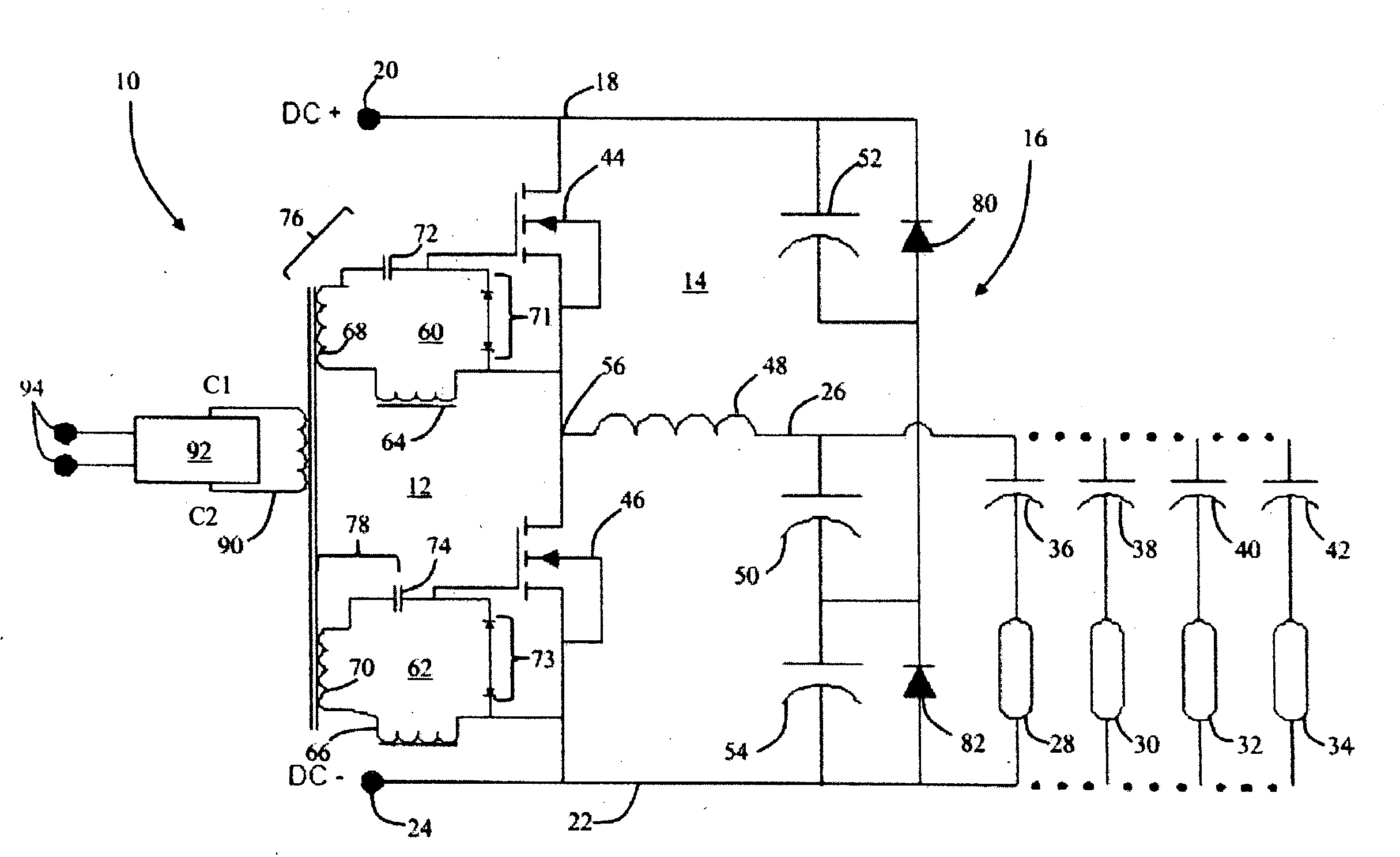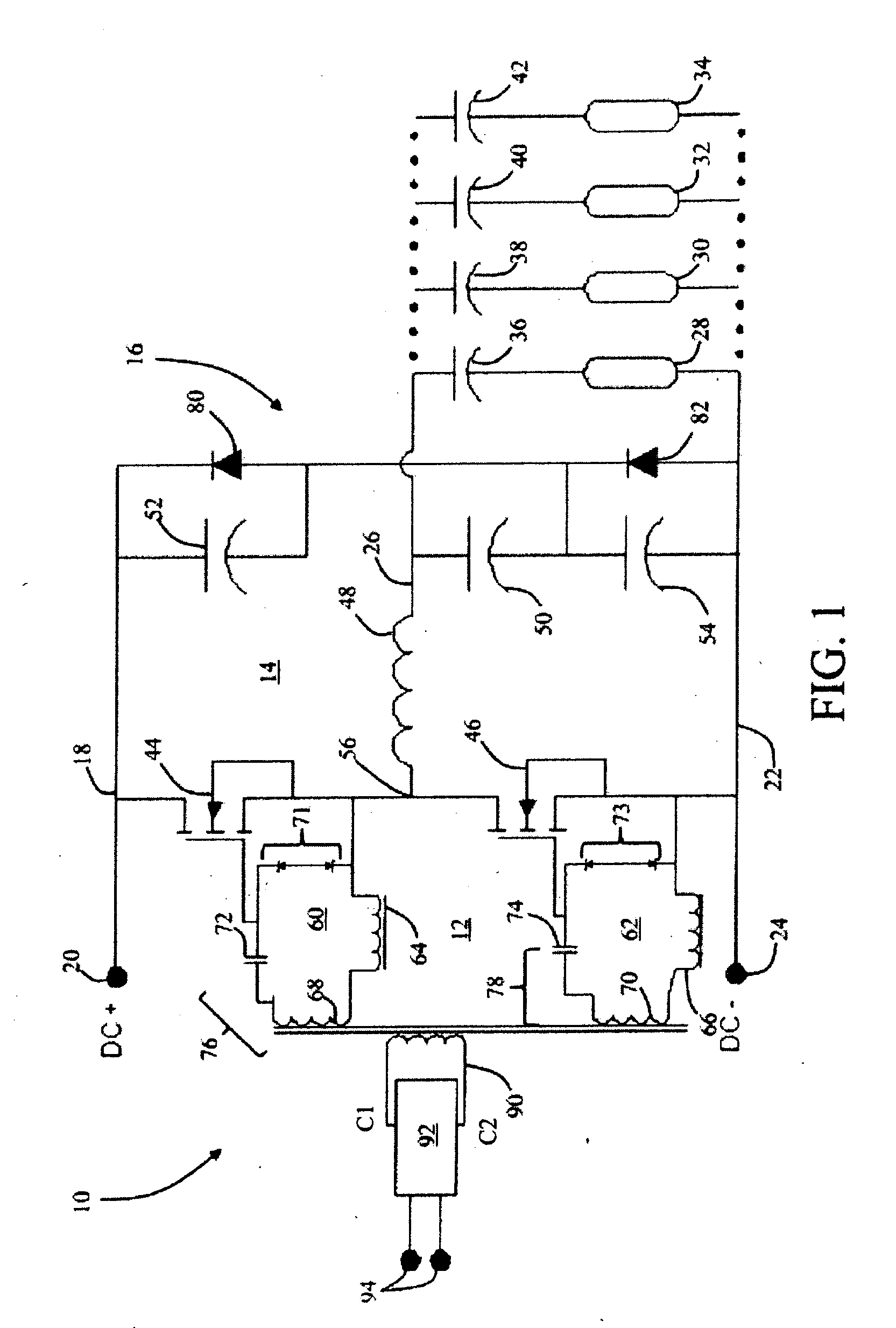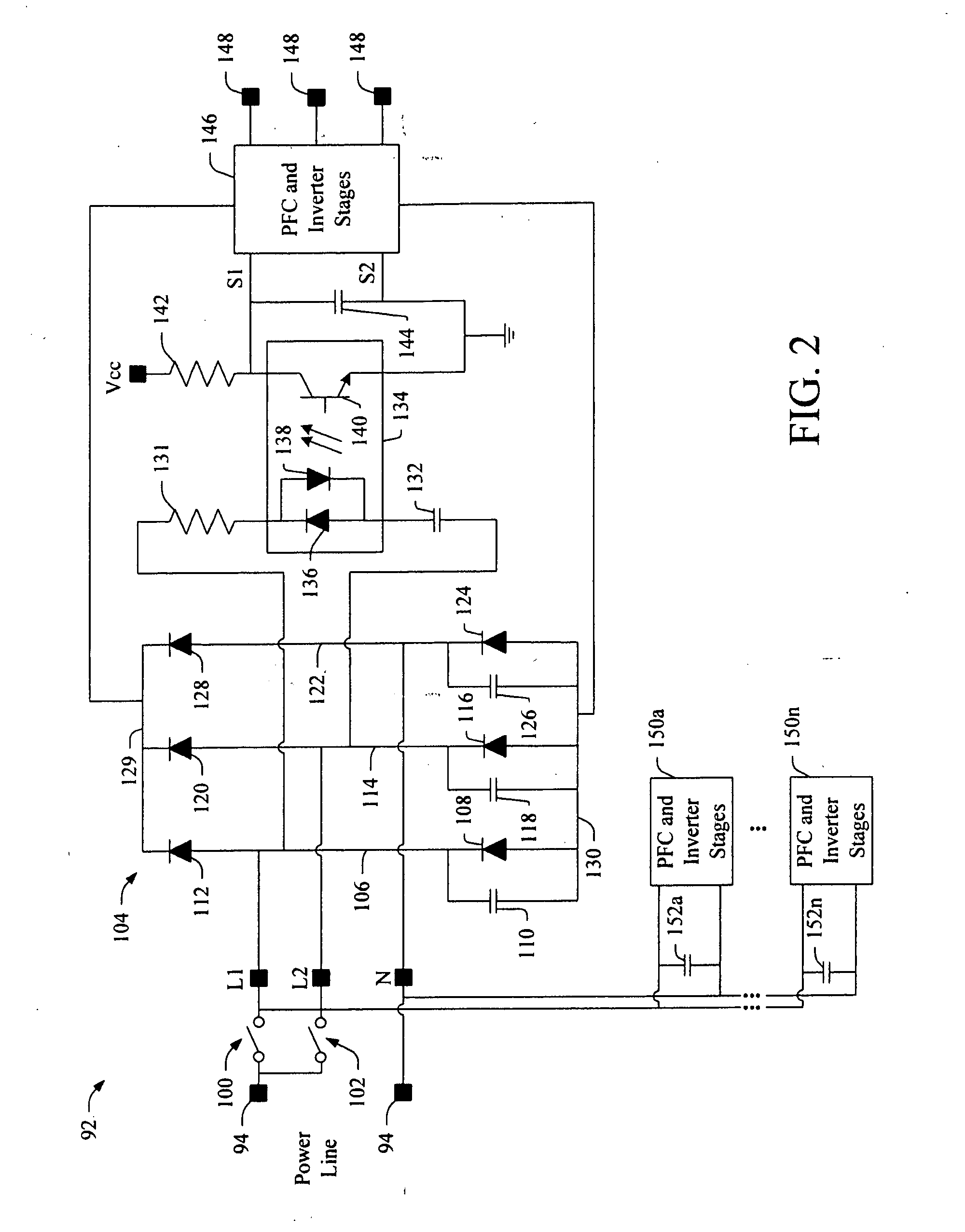Dimming interface for power line
a technology of power line and interface, applied in the field of electronic lighting, can solve the problems of inefficient use of space, limited aggregate output, and inability to produce discrete levels of light outpu
- Summary
- Abstract
- Description
- Claims
- Application Information
AI Technical Summary
Benefits of technology
Problems solved by technology
Method used
Image
Examples
Embodiment Construction
[0012]The following relates to a dimming interface or ballast for a power line. The dimming ballast mitigates capacitive loading caused by non-dimming interfaces or ballasts coupled to the same power line. The described dimming ballast is insensitive to the capacitive loading caused by non-dimming ballasts.
[0013]With reference to FIG. 1, a ballast circuit 10, such as an instant start ballast or the like, which may be employed in conjunction with the herein-described dimming interface circuit 92. The ballast circuit includes an inverter circuit 12 resonant circuit or network 14, and a clamping circuit 16. A DC voltage is supplied to the inverter 12 via a positive bus rail 18 running from a positive voltage terminal 20. DC voltage is derived from the PFC stage. The circuit 10 completes at a common conductor 22 connected to a ground or common terminal 24. A high frequency bus 26 is generated by the resonant circuit 14 as described in more detail below. First, second, third, through nth...
PUM
 Login to View More
Login to View More Abstract
Description
Claims
Application Information
 Login to View More
Login to View More - R&D
- Intellectual Property
- Life Sciences
- Materials
- Tech Scout
- Unparalleled Data Quality
- Higher Quality Content
- 60% Fewer Hallucinations
Browse by: Latest US Patents, China's latest patents, Technical Efficacy Thesaurus, Application Domain, Technology Topic, Popular Technical Reports.
© 2025 PatSnap. All rights reserved.Legal|Privacy policy|Modern Slavery Act Transparency Statement|Sitemap|About US| Contact US: help@patsnap.com



